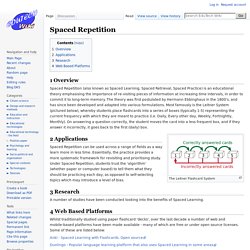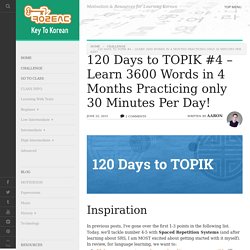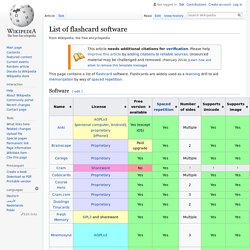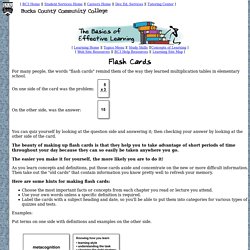

Spaced Repetition - EduTech Wiki. 1 Overview Spaced Repetition (also known as Spaced Learning, Spaced Retrieval, Spaced Practice) is an educational theory emphasising the importance of re-visiting pieces of information at increasing time intervals, in order to commit it to long-term memory.

The theory was first postulated by Hermann Ebbinghaus in the 1800's, and has since been developed and adapted into various formulations. Most famously is the Leitner System (pictured below), whereby students place flashcards into a series of boxes (typically 1-5) representing the current frequency with which they are meant to practice (i.e. Daily, Every other day, Weekly, Fortnightly, Monthly). On answering a question correctly, the student moves the card into a less frequent box, and if they answer it incorrectly, it goes back to the first (daily) box. The Leitner Flashcard System 2 Applications Spaced Repetition can be used across a range of fields as a way learn more in less time. 3 Research 4 Web Based Platforms.
Cram.com: Create and Share Online Flashcards. Learn 3600 Words in 4 Months Practicing 30 Minutes Per Day! In previous posts, I've gone over the first 1-3 points in the following list.

Today, we'll tackle number 4-5 with Spaced Repetition Systems (and after learning about SRS, I am MOST excited about getting started with it myself). In review, for language learning, we want to: Here are two extremes of memory recall: Extreme long-term: wait years between practice sessions / forget almost everything Extreme short-term: practice all the time / be buried in hours of work every day In our Daily practice, we should: Learn new words Remember words from last week Recall some words from months or years back Spaced Repetition Systems Here's a pretty wild claim from Fluent Forever regarding SRS: In a four-month period, practicing for 30 minutes a day, you can expect to learn and retain 3600 flash cards with 90 to 95 percent accuracy.
How can we do that? The Computer Method: The Paper Method: Printable: List of flashcard software. This page contains a list of flashcard software.

Flashcards are widely used as a learning drill to aid memorization by way of spaced repetition. Software[edit] Platform support[edit] References[edit] Anki Docs. Top 6 Flashcard Creation Tools for College Students - Online Education Blog of Touro College. Using flashcards is a popular way to learn new terms or a foreign language.

By reviewing the flashcards over and over again, the information becomes ingrained in your memory so you won’t forget it. Here are 6 online flashcard-creation tools that let you create your own flashcards, or learn from a pre-existing set of cards: StudyBlue is a free study app for iPhone and Android. You can learn pre-existing flashcards or make your own. The app tracks your progress and remembers which terms you have already mastered and which ones still need to be reviewed. We hope you’ll find these tools helpful and can use them to improve your study habits. Using Flash Cards as a Study Skill. [ Learning Home ][ Topics Menu ][ Study Skills ][Concepts of Learning ] [ Web Site Resources ][ BC3 Help Resources ][ Learning Site Map ] For many people, the words "flash cards" remind them of the way they learned multiplication tables in elementary school.

You can quiz yourself by looking at the question side and answering it; then checking your answer by looking at the other side of the card. The beauty of making up flash cards is that they help you to take advantage of short periods of time throughout your day because they can so easily be taken anywhere you go. The easier you make it for yourself, the more likely you are to do it! As you learn concepts and definitions, put those cards aside and concentrate on the new or more difficult information. Here are some hints for making flash cards: Choose the most important facts or concepts from each chapter you read or lecture you attend. Examples: Put terms on one side with definitions and examples on the other side.